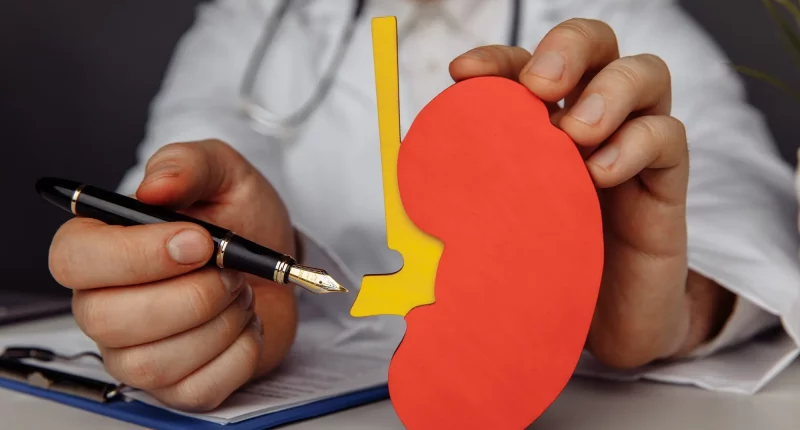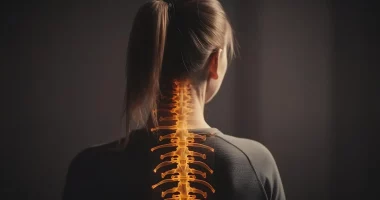Autosomal dominant polycystic kidney disease (ADPKD) is a type of illness that affects the kidneys. In ADPKD, numerous cysts, which are small, fluid-filled sacs, develop in the kidneys. These cysts can make it hard for the kidneys to work properly. People with ADPKD may also have other health issues, such as kidney stones, infections in the urinary tract, and hypertension.
ADPKD can slowly harm the kidneys over time. Sometimes, a person might have ADPKD for many years without noticing any symptoms or realizing they have the disease until it is diagnosed by a doctor.
Symptoms
ADPKD is a disease that gets worse over time, with symptoms becoming more noticeable and severe. The most normal signs are pain in the back and side, kidney cysts, blood in the urine, and hypertension.
Kidney Cysts
In ADPKD, clusters of fluid-filled sacs, called cysts, grow mostly on the kidneys. These cysts cause the kidneys to become larger and gradually lose their ability to function. The cysts are not cancerous and grow slowly, often found on liver bile ducts and kidney tubules. These cysts can differ in size and occasionally become very large. Over time, having many or large cysts can damage the kidneys. Cysts may also form in the pancreas and liver.
Side Pain and Back
Pain is a common symptom of ADPKD. Most individuals experience occasional episodes of pain, while a small number have constant, severe pain. Pain can appear early in the disease and help doctors diagnose ADPKD. The pain is often related to issues with the kidneys or cysts. As cysts grow, they can cause pain by pressing on nearby organs or tissues. Cysts can also burst or bleed, causing sharp pain in the abdomen or lower back, known as flank pain.
Blood in the Urine
Hematuria is common in ADPKD. This usually happens when a cyst ruptures or when kidney stones are passed. Hematuria affects about 35% to 50% of individuals with ADPKD and is often one of the earliest symptoms of the disease. Episodes of hematuria typically last from 2-7 days and are usually treated with rest and raised fluid intake. Sometimes, antibiotics or shock wave therapy (lithotripsy) may be needed to treat an infection or break up kidney stones, but often no treatment is required.
High Blood Pressure
High blood pressure also known as hypertension is a frequent symptom of ADPKD and happens in most individuals with the condition. This is often due to the kidneys becoming larger and is a risk factor for end-stage renal disease (ESRD). Nearly all individuals with ADPKD who experience kidney damage also have long-standing hypertension. High blood pressure can further harm the kidneys, so it’s important to manage it to slow down kidney damage. About 20% of children with ADPKD and most adults have high blood pressure even before their kidneys lose function. Heart problems are also common and can appear before high blood pressure develops.
Rare Symptoms
In addition to the more common symptoms, ADPKD can sometimes cause less frequent issues:
Urinary Tract Infections (UTIs)
These infections affect the urinary system and can cause symptoms like pain during urination, frequent urge to urinate, and cloudy or strong-smelling urine.
Kidney Stones
Small, hard deposits form in the kidneys, causing severe pain, especially when passing through the urinary tract.
Pancreatic Cysts
Fluid-filled sacs that develop in the pancreas, which may cause abdominal pain or discomfort.
Liver Cysts
Similar to kidney cysts, these non-cancerous sacs develop in the liver and can cause the liver to enlarge, sometimes leading to pain or discomfort.
These rare symptoms can complicate the management of ADPKD and may require additional medical attention.
Complications of ADPKD
Many complications can arise from severe Autosomal Dominant Polycystic Kidney Disease (ADPKD). Being aware of these complications is crucial for timely detection and treatment of new or aggravate symptoms.
- Kidney Failure
- Vascular System Problems
- Digestive System Problems
- Reproductive Issues
Treatment
Currently, there’s no cure for adult ADPKD, but healthcare providers focus on managing its complications and slowing down the growth of cysts.
A healthy lifestyle with regular physical activity and a balanced diet can assist delay kidney damage. Stress reduction techniques and ceasing smoking also promote overall well-being.
Sometimes, doctors may prescribe medications to control high blood pressure, which is common in PKD.
For children with ARPKD or PKD diagnosed in infancy, treatment may include:
- Growth hormones: To support healthy growth.
- Medications for blood pressure: To manage high blood pressure.
- Antibiotics: To treat infections that may occur.
- Dialysis: If kidneys fail, dialysis can help filter waste from the blood.
- Kidney transplant: A new kidney from a donor can replace the failing kidney.
- Liver transplant: In some cases, a liver transplant may be necessary, especially if the liver is affected by cysts.
When to See a Doctor
It’s possible to have ADPKD for many years without knowing it because symptoms often don’t appear until after age 30.
If you start experiencing any symptoms of ADPKD, it’s important to see your doctor. This is particularly crucial if you have a close family member—such as a sibling, parent, or child—who has been diagnosed with ADPKD. Early detection and monitoring can help manage the condition more effectively.
Causes of ADPKD
Autosomal Dominant Polycystic Kidney Disease (ADPKD) is a genetic condition, affecting about 1 in 800 individuals. Approximately half a million individuals in the United States have ADPKD, and it accounts for 2% of all kidney damages. ADPKD is frequently determined in adults between the ages of 30 and 50, but it can also occur in early adolescence or childhood.
ADPKD is caused by a genetic change that disrupts the development of kidney cells, leading to the formation of cysts. The most common genetic mutations associated with ADPKD are in the PKD1 and PKD2 genes. Most individuals with ADPKD have a mutation in the PKD1 gene, while around 15% have a mutation in the PKD2 gene. If a parent has a faulty PKD1 or PKD2 gene, their child has a 50% risk of growing ADPKD.
The seriousness of ADPKD depends on which gene is affected. People with a PKD1 mutation typically grow kidney failure more quickly than those with a PKD2 mutation.
Another form of polycystic kidney disease is autosomal recessive polycystic kidney disease (ARPKD). This type is much rarer and occurs only if both male and female parents carry the faulty gene. It can be fatal within the 1st month of life. However, children who live will often require kidney transplant or dialysis later in childhood.
Summary
Autosomal dominant polycystic kidney disease (ADPKD) is a genetic illness where small sacs filled with fluid, called cysts, grow in the kidneys due to changes in the PKD1 and PKD2 genes. Symptoms often start appearing between ages 30 and 50, but children can also be affected.
Alongside cysts, ADPKD can lead to pain in the lower stomach, lower back or side, blood in the urine, stones in the kidney, and recurring urinary tract infections (UTIs). Over time, ADPKD leads to a gradual loss of kidney function.
If you notice signs of ADPKD, like pain or blood in your urine, it’s crucial to see your doctor promptly, especially if others in your family have the condition. Early detection and management can help slow down the progression of ADPKD and reduce complications.








